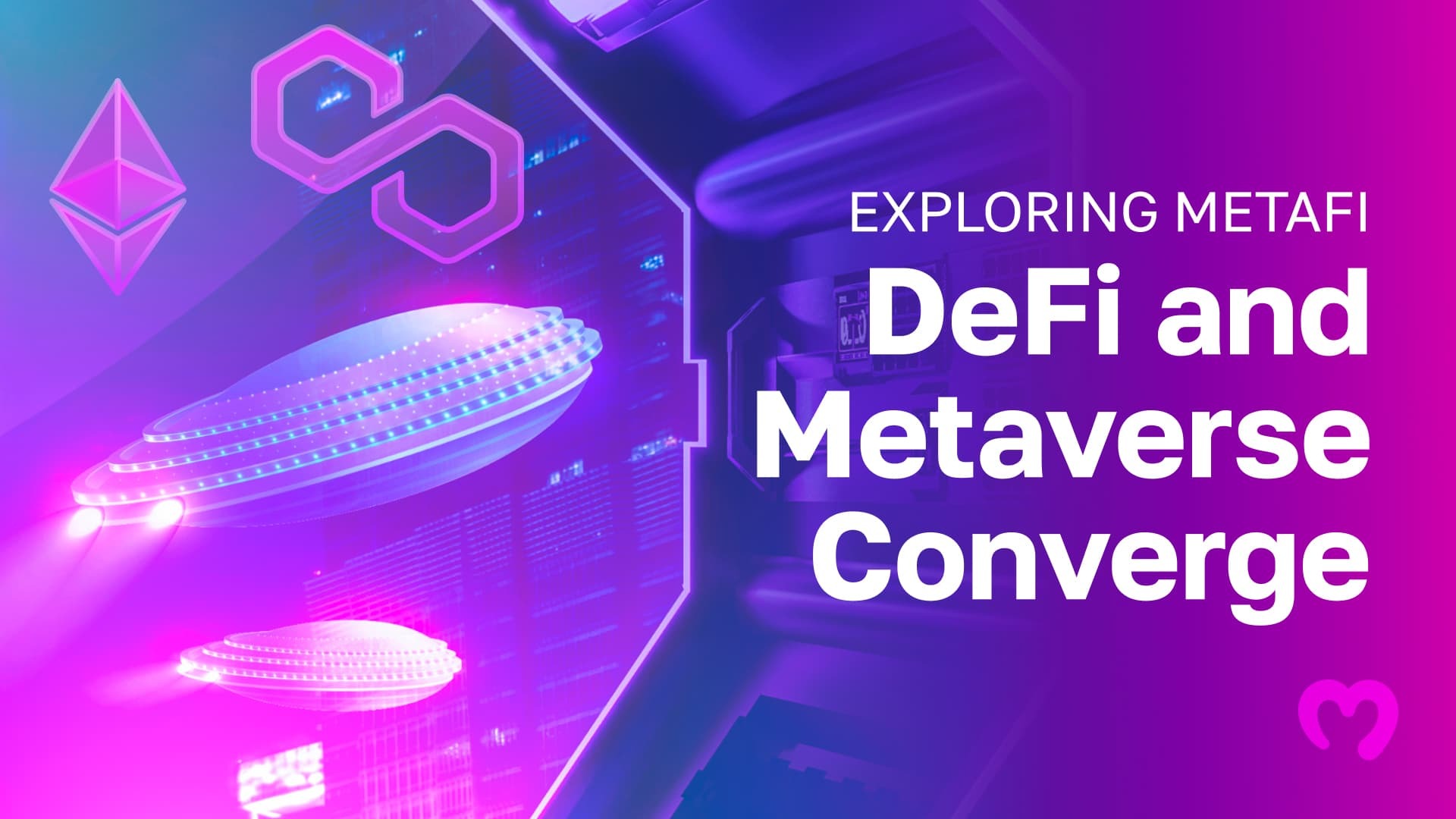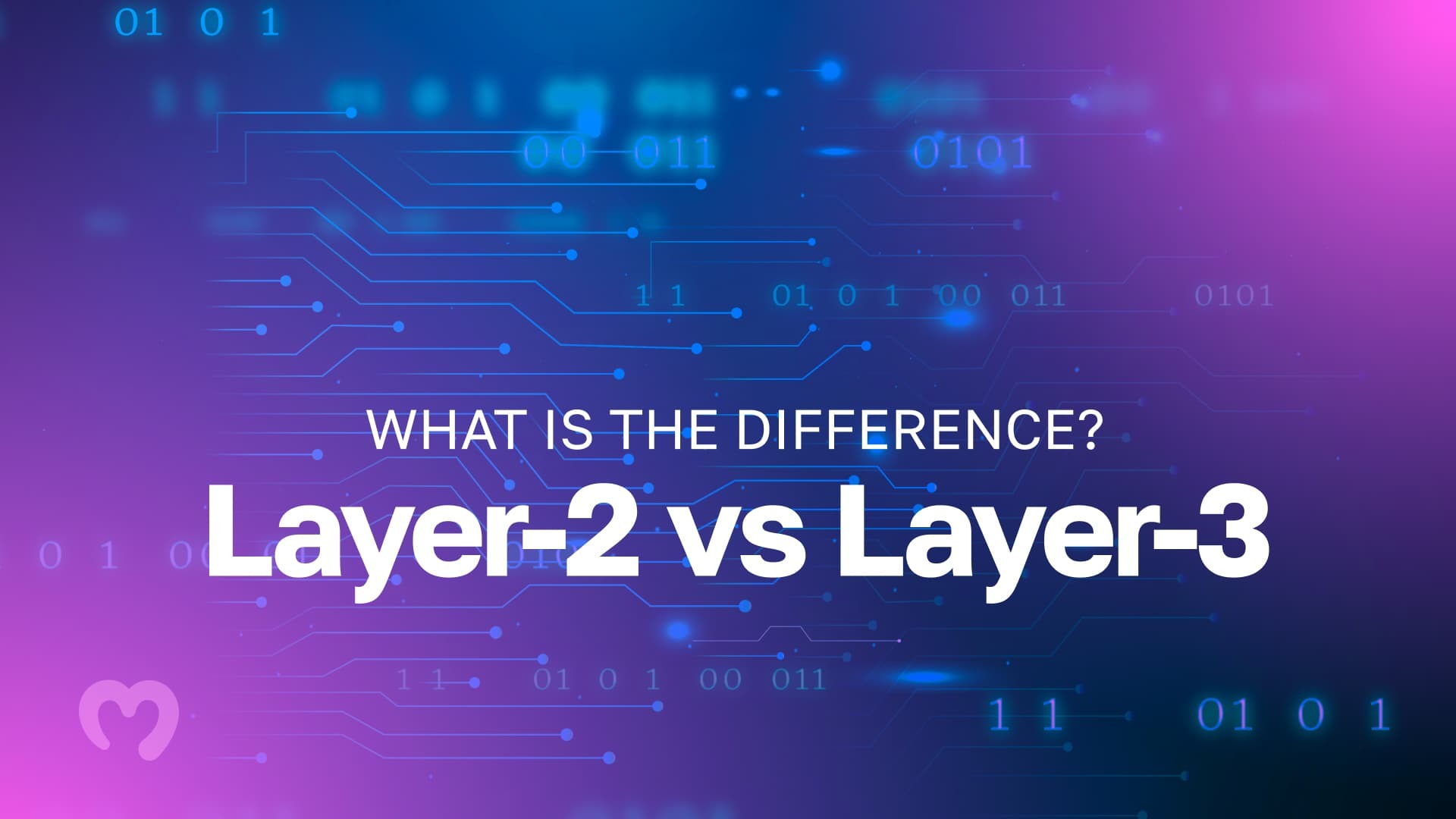When decentralized finance and metadata collide, you get the world of MetaFi. Furthermore, Binance coined the term MetaFi earlier in 2022. The idea behind MetaFi is to standardize blockchain technology for traditional Web2 applications, games, social media platforms, and metaverses. Also, the goal of MetaFi is to seamlessly improve interoperability across these digital platforms. Plus, MetaFi is an environment that is completely decentralized and financially independent.
MetaFi Explained - How DeFi and Metadata Converge
As mentioned in the introduction, MetaFi is still a relatively new and futuristic technology. It aims to bring multiple aspects of Web3 together to construct a new way for global transactions and interactions. With its convergence with decentralized finance, MetaFi allows for trading on the blockchain, its exchanges, games, activities, and social platforms. Furthermore, combining metadata with DeFi means that every asset sold or traded in the metaverse is secured through blockchain technology. Moreover, that includes all of its specifications and features. The metadata of each transaction will include all the important details of each transaction to keep interactions as transparent and honest as possible.
What is Metadata?
In short, metadata is the data that gives you information about other data. In other words, think about a picture on your phone. The photo itself is data. The metadata of your photo is the finite details such as location, time, pixels, etc. In blockchain transactions, metadata refers to the additional specifications of a piece of data. Take NFTs as an example. While the data may be an NFT image, the metadata in the blockchain will include other details such as time, location, special features, and any details the author deems significant.

What is Decentralized Finance?
Simply put, decentralized finance (DeFi) is decentralization and finance put together and is a form of transaction without a middleman. Accordingly, decentralized finance allows its participants to interact with one another without the use of an intermediary. Furthermore, DeFi eliminates the hassles involved with banks, such as fees, long lines, and transaction limitations, and most importantly, it provides unprecedented privacy for its participants.
Moreover, blockchain technology allows for easy and secure DeFi transactions to take place. Anyone can participate in DeFi transactions as long as they have internet access. While it brings simplicity for participants, DeFi comes with risks. Global regulations for DeFi are still in the works and not yet clear. Money laundering, trafficking, and other criminal activities can become much easier than before with blockchain technology. It’s no wonder DeFi is the “wild wild west” of the cryptocurrency space.
We’ll discuss more on DeFi and what it means in the MetaFi space in the following paragraphs.

How Does the Metaverse Play a Role in MetaFi?
Imagine work meetings, social gatherings, gaming, global conferences, and other activities taking place solely on the internet. Well, the metaverse is just that. It’s the next generation of the internet (Web3), where people can engage with one another in a 3D virtual space. In other words, the metaverse is a combination of the physical world and the digital world. Furthermore, it’s available to users through PC, phones, gaming consoles, and VR headsets. With top-tier technology, the metaverse is truly an all-encompassing ecosystem. Also, it enables participants to immerse themselves in the Web3 space. Even though it goes beyond the virtual world, the metaverse still has much room to grow.
Inside the metaverse, you can own land, avatars, NFTs, games, videos, and other assets. Additionally, that’s where DeFi comes in. You’ll be able to trade goods with other users in the metaverse. Accordingly, this concept of decentralized trading is called MetaFi. Furthermore, the idea of “decentralized” trading means no central governing authority. Your assets in the metaverse are represented as NFTs, and their specific features are the metadata. The metadata indicates the rarity and special features of your asset, and transactions of your assets are made by the use of cryptocurrencies.
So far, we’ve discussed metadata, DeFi, and the metaverse. Now, let’s dig more into detail on the role of DeFi in the metaverse. Also, if you just can’t get enough of all of these new terms, get a hold of our crypto terminology guide at Moralis Academy. Moralis Academy provides all the words and definitions you need to know to stay on top of your crypto game!
The Role of DeFi in the Metaverse
The metaverse has unlimited potential. Bloomberg estimates that investment opportunities in the metaverse have a value upwards of $800 billion by as early as 2024! Other experts, such as Citi (Citigroup), forecast a potential value of $8 to $13 trillion by the end of 2030.
Citi has also suggested that MetaFi will not only be the convergence of metadata and decentralized finance (DeFi) but that it could combine all forms of finance - DeFi, centralized finance (CeFi), and traditional finance (TradFi) - into one space. Considering the transition most of the world has already made into digital environments, we’re already participating in an early version of the metaverse.
Investment opportunities are endless with DeFi in the metaverse. DeFi in the metaverse could reconstruct traditional commerce so that participants can trade and transact without any limitations such as distance or time. The market value of DeFi has already surpassed $100 billion, with the potential to grow exponentially. Nasdaq features a cryptographic index to track the market value of DeFi products called Defix (DEFX).
Loving what you’re learning so far? Take a look at Moralis Academy and check out our courses. Also, check out our brief tutorials, such as the How to Make a Web3 Website guide. We also have blockchain guides for all things blockchain!
Identity and the Metaverse
One of the advantages of blockchain technology is that participants can choose to use their digital identities without giving away their personal information. Also, users have the ability to reinvent themselves through digital identity. Furthermore, digital identities will be built upon digital assets and avatars. But, much like a double-edged sword, this level of privacy can become dangerous in the hands of the wrong participant.
As blockchain technology advances, regulations will likely also advance. At the moment, most countries simply haven’t figured out how to integrate the limitless potential of the metaverse with rules and regulations that will keep their citizens safe and secure.
Moreover, the metaverse will allow its participants to express themselves freely. Every aspect of an avatar in the metaverse is customizable. Compared to Web2, Web3 will allow users to customize every aspect of their identity without leveraging their digital assets. Users can have a work identity, personal identity, and any other kind of identity they want online. This idea of a custom identity represents the control users will have over their data. Here’s one example of a customizable avatar in the metaverse:
Use Cases of MetaFi
So, how exactly does MetaFi work? From virtual real estate to fashion, entertainment, and advertising, MetaFi virtually has endless possibilities. Have you heard of OpenSea or Rarible? These marketplaces are just a couple of examples of the use cases for MetaFi. Hence, marketplaces for just about all sectors can be built using MetaFi. Additionally, sports clubs have also recently made use of MetaFi with "fan tokens". Furthermore, sports clubs mint fan tokens to give holders exclusive perks and benefits.
Another interesting use case of MetaFi is similar to a traditional savings account. In the metaverse, this concept is better known as yield farming. Much like a savings account, yield farming rewards participants who lend their cryptocurrencies or NFTs in exchange for interest or other rewards. For example, users can lend NFTs to borrowers. Renting an NFT would allow access to exclusive databases to those who otherwise could not afford it.
Want to know what it's like shopping in the metaverse? Check out our blog post and much more at Moralis Academy.
The Rise of the Play-to-Earn (P2E) Model
You might be familiar with Axie Infinity and The Sandbox. These P2E games are the new and improved way of gaming. While in-game assets may not have value in traditional games, they hold real-world value in play-to-earn models. P2E games reward players with in-game assets such as virtual land, skin, or cryptocurrency. Players can trade or sell those assets for real-world value. With the potential to make money and its inherent entertainment value, play-to-earn games are gaining a lot of popularity.
You might often hear about play-to-earn games called crypto games. Essentially, it’s the same thing. Most play-to-earn games reward their participants with cryptocurrencies that can be exchanged for real-world value.
Furthermore, these games can reward players in either a native token that is special to the game or they can reward players with another cryptocurrency. Moreover, some developers require an initial investment, such as purchasing an NFT, to earn rewards within the game.
So, how is all of this related MetaFi? Well, play-to-earn games are blockchain-based. By nature, these games are decentralized. All of the transactions get secured in the blockchain. The blockchain store the special features and details of the assets as metadata. So, in essence, play-to-earn games utilize decentralized finance, metadata, and the metaverse simultaneously.
Challenges of MetaFi
While bits and pieces of MetaFi are already here, there is still a long way to go. Scalability and security are still issues when considering the vast adoption blockchain networks will have to support. Accordingly, before it's ready for global mass consumption, MetaFi and Web3 technology must develop interoperability, scalability, and security for its participants.
Also, you might have noticed the rise and fall of games in the metaverse. At this point, DeFi and crypto games are still hit or miss. As such, these games still need room to grow to be sustainable long-term. The incentives and tokenomics must properly align to gain and continue to hold players' interests.
Perhaps the greatest challenge for MetaFi right now is its lack of interoperability. Applications need to be able to monitor, access and share information across platforms and blockchain networks. Interoperability would allow the execution of multiple functions easily and transparently. While some blockchain networks are still working on interoperability, it may take some years of trial and error for them to be completely successful.
The Future of MetaFi
MetaFi projects are still in their early stages. Only time will tell how successful projects will be. Furthermore, projects must overcome a few speed bumps, but Web3 developers and blockchain enthusiasts show no sign of slowing down or losing interest in the technology.
If we imagine a scenario where MetaFi holds up to the reality developers expect it to be, it could look something like the following scenario. Imagine a social platform where you have customized your own digital ID. You enter a trading platform within that social network and can interact with other participants by text, voice, or images. You agree with another participant to perform a trade, so each of you connect your digital wallets to the trading platform and complete the transaction through DeFi. Assuming that interoperability is up to par, MetaFi could execute thousands, maybe even millions, transactions within seconds worldwide.
Exploring MetaFi - Conclusion
The possibilities with blockchain and Web3 technology are without limit. Bringing together the concepts of DeFi, metadata, and the metaverse will allow for decentralization in just about every sector. MetaFi will allow global transactions to take place without any virtual limits, such as physical location, time, or transaction amount. Right now, there are a few limitations and speed bumps, the biggest being interoperability.
Moreover, not achievable yet is a technology that will allow for seamless interoperability. Developers still have a long way to go to make MetaFi the true success it could be. There are limitations in hardware and software, regulation, and scalability. However, with time and the continuous development of technology, developers could overcome this.
Love learning about the metaverse and all of its future possibilities? If so, then read our article on the future of the metaverse! You'll learn more about virtual real estate, fashion in the metaverse, music, and so much more.



